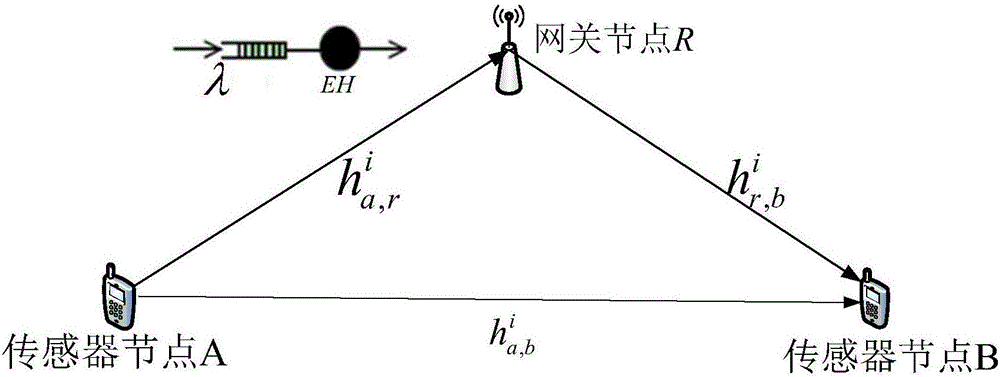Joint path selection and power distribution method for energy collection nodes in wireless sensor network
A wireless sensor network and energy harvesting technology, applied in power management, wireless communication, energy consumption reduction, etc., can solve problems such as performance improvement and joint resource allocation performance optimization without fully considering energy harvesting factors
- Summary
- Abstract
- Description
- Claims
- Application Information
AI Technical Summary
Problems solved by technology
Method used
Image
Examples
Embodiment 1
[0074] The present invention is aimed at a special application scene, comes from practical application, and the scene setting is meticulous and reasonable, and has practical guiding significance. Specifically, a joint path selection and power allocation method for energy harvesting nodes in a wireless sensor network, comprising the following steps:
[0075] Step 1: system scenario analysis, problem description;
[0076] Consider a non-real-time data transmission scenario of a wireless sensor network based on energy harvesting. In the scenario, there is a sensor node A with stable power supply, a gateway node R for energy harvesting, and a target communication sensor node B. Consider sensor nodes A with stable power supply and There is a direct path between target communication sensor nodes B, and an energy harvesting gateway node R can cooperate to forward information. The energy harvesting gateway node R adopts the decoding and forwarding working mode. A transmission process ...
Embodiment 2
[0113] In order to make the algorithm closer to the actual application, it can better reflect the channel situation and be closer to the real channel. Further improvement on the basis of the foregoing embodiment one. Specifically, the use of the Bernoulli model is to simplify the calculation, which can better reflect the situation of the channel and is closer to the actual channel.
[0114] Said step 2 includes:
[0115] Step 2.1: Determine whether the decoding is successful
[0116] D i = 1 w i t h p r o b a b i l i ...
Embodiment 3
[0129] In order to make the algorithm closer to practical application, we adopt a simplified energy harvesting curve, which can better reflect the real model of energy harvesting, simple and effective. It can be used on the basis of the foregoing embodiment one. The energy harvesting model uses a Bernoulli process, specifically,
[0130] E H i = E , w i t h p r o b a b i l i t y ρ ...
PUM
 Login to View More
Login to View More Abstract
Description
Claims
Application Information
 Login to View More
Login to View More - R&D
- Intellectual Property
- Life Sciences
- Materials
- Tech Scout
- Unparalleled Data Quality
- Higher Quality Content
- 60% Fewer Hallucinations
Browse by: Latest US Patents, China's latest patents, Technical Efficacy Thesaurus, Application Domain, Technology Topic, Popular Technical Reports.
© 2025 PatSnap. All rights reserved.Legal|Privacy policy|Modern Slavery Act Transparency Statement|Sitemap|About US| Contact US: help@patsnap.com



